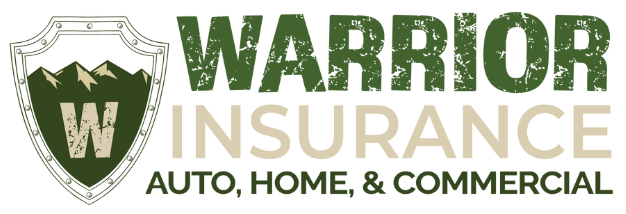Remodeling your home is an exciting way to improve comfort, boost value, and customize your space to fit your lifestyle. Whether you’re updating the kitchen, finishing the basement, or adding square footage, the results can be both rewarding and practical. But what many homeowners tend to overlook is how changes like these affect their homeowner’s insurance. Once the dust settles and everything looks picture-perfect, your updated home might be worth a lot more, and that means your old insurance coverage might not be enough anymore.
In Colorado Springs, where property values can shift quickly and surprise weather can bring unexpected damage, it’s especially important to make sure your home owner’s insurance reflects your most current setup. Remodeling could bump up the cost to rebuild your home if something happened to it. If your policy doesn’t account for those changes, you might be left facing avoidable gaps in coverage down the line. The good news is that staying ahead of this is easy if you know what to watch for.
Understanding The Impact Of Home Improvements On Insurance
Home upgrades can lead to big improvements in lifestyle and space, but they can also come with added risk and increased value. When your home becomes more valuable through renovations, your current policy might not cover the total cost of rebuilding or repairing damages. That makes it worth revisiting your policy after even a few major updates.
Remodels that can affect home insurance include:
– Adding or expanding rooms (more square footage means a higher rebuild cost)
– Installing new countertops, cabinetry, or floors in kitchens or bathrooms
– Putting in custom features like built-in shelving or wine cellars
– Building outdoor structures, such as decks or detached garages
Even lifestyle-driven upgrades, like installing a hot tub or backyard pool, can make a difference. These features might increase enjoyment, but they may also bring new risks like slips or equipment problems. Insurance companies often take those into account when reconsidering liability coverage.
Think of it like this. If your home went through a fire or flood and you had to rebuild, would your current coverage reflect the real value of what you’ve just added? If the answer is no or even maybe, it’s time to open up that policy and double-check. That doesn’t mean every small change requires a policy update, but for bigger projects, it’s better to stay ahead and adjust as needed.
Notifying Your Insurance Company About Changes
Once your remodel is complete, the next step is telling your insurance company. The sooner you update your policy, the safer you’ll be from any potential gaps or claim issues. This process is usually pretty simple, but a few steps can help make it smoother.
Here’s what to do:
- Make a list of all major updates to your home.
- Collect receipts or invoices from contractors and suppliers.
- Take clear, well-lit photos of new areas and features.
- Reach out to your insurance agent and explain what was done.
- Ask for a review of your current coverage to make sure it’s enough.
Being upfront about changes helps avoid problems when a claim comes up later. It shows that you’ve taken the time to reassess your needs and share accurate details. Plus, it gives you peace of mind knowing your home is covered as it stands now, not as it was years ago.
Good documentation matters too. Keep digital and physical copies of your receipts and photos. This makes it a lot easier to provide proof of what was changed if your insurance company needs to verify anything on file. Think of it like keeping a folder of home history that you can reference whenever a big project is complete.
Adjusting Coverage to Reflect Home Value
After remodeling your home, reassessing your insurance coverage is a smart move. This isn’t just about catching up. It’s about making sure your investment is protected. Start by evaluating your home’s current value. If your property value has increased due to renovations, you’ll need to rethink your current coverage to match this new reality. The cost to rebuild a home that has been enhanced may be more than your existing policy covers.
Consider speaking with a professional home appraiser who can give you a clear idea of your home’s worth post-remodel. This appraisal will help guide your conversation with your insurance agent, making sure you’re covered for the full replacement cost. Keep in mind that while updating your coverage might slightly adjust your premiums, it’s a small price compared to the stress of not being fully covered when something happens.
Potential Discounts and Policy Changes
Along with updating coverage, you might discover opportunities to save. Certain home improvements can lead to discounts on your insurance premiums. For example, adding a security system can decrease the chance of theft or vandalism, which could help reduce your rates. Making energy-efficient updates might also be rewarded with lower costs, as many insurers encourage eco-friendly choices.
When reviewing your coverage, ask your provider about possible discounts for added safety, energy savings, or upgraded systems. This includes things like storm-resistant windows or a modernized electrical system. These improvements not only improve the value of your home and make it safer but can also support long-term savings.
It’s also a great time to ask about bundling options. Combining your home and auto insurance into one package often brings added convenience and better pricing. Bundled policies make it easier to manage coverage and can lead to noticeable savings over time.
Keep Your Investment Protected for the Long Run
Keeping your home owner’s insurance up to date after remodeling is a smart way to protect your upgrades and avoid risk down the road. Your home might be your biggest investment, so making sure it reflects its current value is just good planning. From the kitchen to the backyard, every improvement deserves the right level of protection.
When remodels are complete, it’s a good idea to make reviewing insurance part of your final checklist. Reaching out to your provider, sharing updates honestly, and keeping solid records of your changes helps keep everything running smoothly if a claim ever arises. Plus, you might catch opportunities to improve your coverage or even save some money.
Whether you’re adding space, upgrading features, or making your home more efficient, proper insurance coverage brings peace of mind. Regular check-ins with your agent mean your policy keeps up with your home—and not the other way around. Protect your investment, and take the extra step to keep your coverage current.
FAQs
What types of remodels should I notify my insurance company about?
Anything that significantly changes your home’s value or layout should be shared. This includes room additions, kitchen or bath remodels, pools, decks, and detached structures.
How do home improvements affect my insurance premiums?
Improvements may increase your home’s value, which can raise your premium. But safety or efficiency updates might also bring discounts.
Can I get discounts on my insurance after home renovations?
Yes. Adding things like security systems, impact-resistant features, or energy-efficient upgrades may qualify you for lower premiums.
What documentation should I keep after a remodel?
Keep all receipts, contractor invoices, and clear photos of the renovations. These help verify the value and details of your updates.
How can I bundle my home and auto insurance for more savings?
Ask your insurance provider about combining both into one plan. Bundling often makes managing insurance easier and may lower your total cost.
Updating your insurance after a remodel is an important step to protect your home. For homeowners in Colorado Springs, making sure you have the right coverage can offer peace of mind and financial protection. At Warrior Insurance, we can help confirm that your home owner’s insurance is up to date and tailored to your renovated space. Our team is here to guide you through your policy options and explain how bundling your coverage could offer more convenience and savings. Reach out today to get started on protecting your upgraded home.

